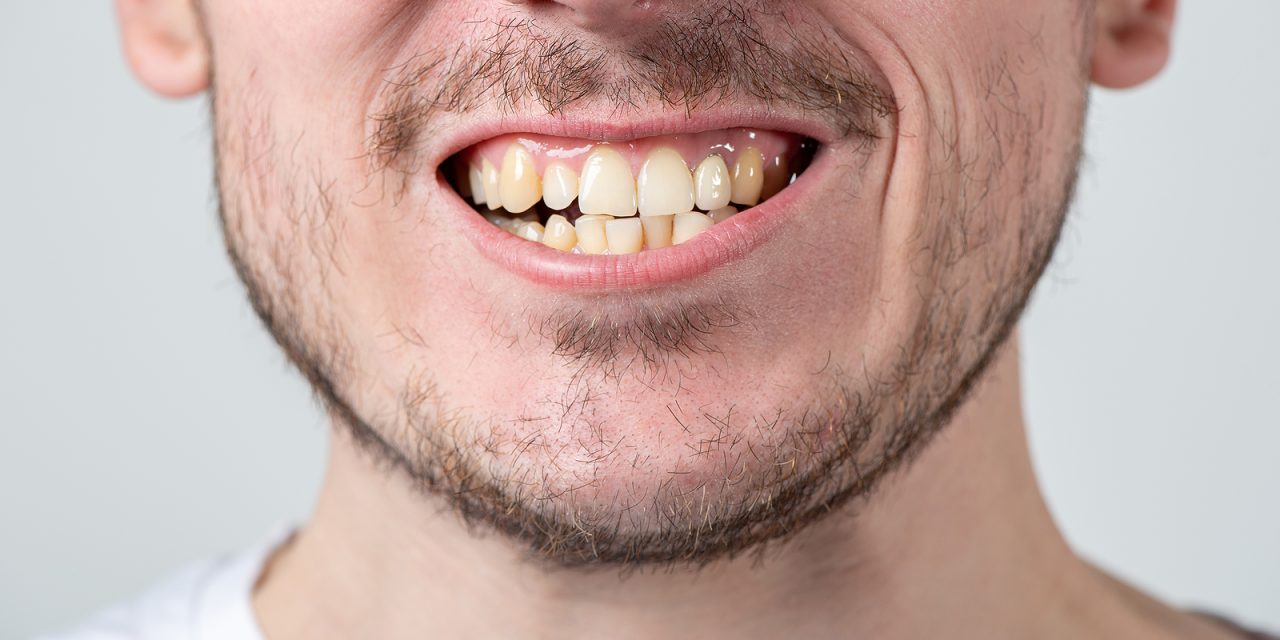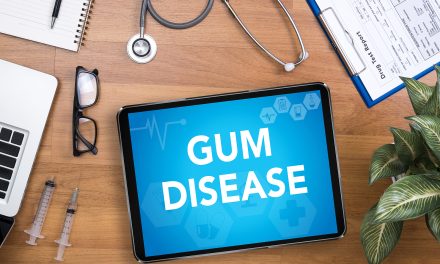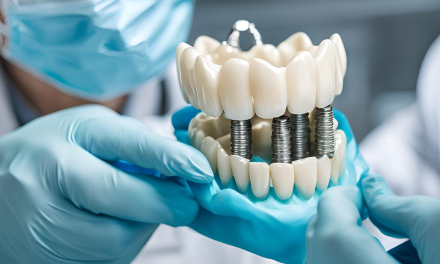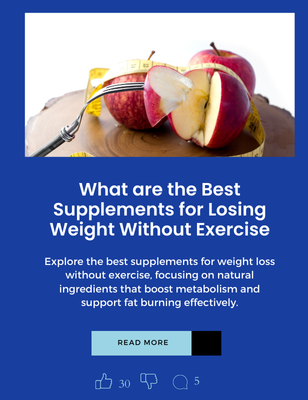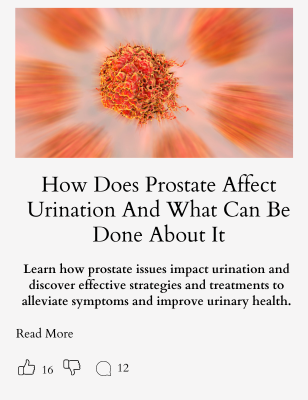Yellowing of teeth can affect the confidence of many individuals, leading them to seek out methods to restore the natural whiteness of their smile. The causes of yellow teeth range from genetics to daily habits such as diet and smoking. While yellow teeth are often seen as a mark of poor oral hygiene, it can also occur in individuals with impeccable dental care routines. Various at-home remedies and professional treatments are available to tackle tooth discoloration, and understanding the underlying causes can help in selecting the most effective method.
Good oral hygiene is the cornerstone of maintaining a bright smile, entailing regular brushing and flossing to prevent the build-up of plaque and tartar that can lead to staining. Professional dental care, including cleanings and whitening treatments, can also assist in achieving a lighter tooth shade. Additionally, advancements in teeth whitening technology offer new options for those looking to whiten yellow teeth, with products tailored to reduce sensitivity and improve effectiveness. It’s important to evaluate these methods carefully to avoid damaging the enamel or causing undue sensitivity.
Key Takeaways
- Maintaining a consistent oral hygiene practice is crucial for preventing tooth yellowing.
- Professional dental treatments can be effective in whitening teeth.
- It is essential to select teeth whitening methods that are both safe and suit your specific needs.
Understanding Tooth Discoloration
Tooth discoloration can stem from various factors, including dietary habits, tobacco use, and genetic predispositions. It’s important to recognize the contributing elements to effectively address and prevent yellow teeth.
The Role of Diet in Tooth Color
The consumption of certain foods and beverages can have a profound impact on tooth color. Foods high in tannins, such as tea and berries, can cause extrinsic tooth stains. Similarly, coffee and wine are well-known for their staining capabilities. To maintain a whiter smile, it’s advisable to limit intake of these items or practice thorough oral hygiene after consumption.
Tobacco and Oral Health
The use of tobacco products is a prominent cause of tooth discoloration. Both smoking and chewing tobacco deposit nicotine and tar on teeth, leading to stubborn brown or yellow stains. Ceasing tobacco use is vital for not only improving tooth color but also safeguarding overall oral health.
Influence of Genetics and Aging
Genetic factors can dictate the natural color of one’s teeth, and as a person ages, enamel can thin, revealing the yellowish dentin beneath. Age-related discoloration is a natural process often exacerbated by dietary choices, but some individuals might be more prone to it due to their genetic makeup. It’s important to differentiate between discoloration due to aging and stains caused by dietary and lifestyle choices.
Daily Oral Hygiene Practices
Maintaining a healthy, white smile requires a diligent oral hygiene routine that includes proper brushing and flossing techniques, as well as using the right toothpaste. Good oral hygiene practices not only improve teeth appearance but also prevent plaque buildup, which can lead to yellowing.
Effective Brushing Techniques
One should use an electric toothbrush for enhanced plaque removal. Brushing should be done at least twice a day, with each session lasting two minutes. The brush head needs to be angled at 45 degrees to the gum line to effectively remove plaque. Teeth should be brushed using gentle circular motions rather than vigorous horizontal strokes to prevent gum damage.
The Importance of Flossing
Flossing daily is crucial for removing plaque and food particles from between teeth and along the gum line, areas typically missed by toothbrushes. Wrap the floss around each tooth in a “C” shape and gently move it up and down, making sure to get below the gumline without harshly snapping the floss which can cause irritation.
Choosing the Right Toothpaste
Toothpaste that contains fluoride is essential for reinforcing tooth enamel and fighting tooth decay. For those looking to whiten teeth, selecting a toothpaste with whitening agents can help reduce surface stains. However, it’s important to ensure it’s not too abrasive, which can damage enamel over time. Reading labels and looking for approval seals from dental associations can guide in choosing an effective toothpaste.
Professional Dental Care
Professional dental care offers targeted solutions to combat yellowing teeth, from routine maintenance to specialized treatments that preserve dental health and restore the whiteness of enamel.
Routine Dental Cleanings
Routine dental cleanings, performed by a dental hygienist, play a crucial role in maintaining oral health and preventing enamel discoloration. These cleanings involve the removal of plaque and tartar that can contribute to yellowing when not addressed. Patients are advised to schedule a cleaning at least twice a year to ensure the removal of stains and buildup that daily brushing might miss.
Consulting with a Dental Professional
A dentist can offer a variety of professional teeth whitening treatments that are more effective than over-the-counter products. When consulting with a dental professional, they will assess the condition of the teeth and recommend procedures suited to the individual’s needs. These treatments can range from in-office bleaching processes, which offer immediate results, to custom-fitted trays designed for at-home use under the dentist’s guidance. Regular dental checkups are essential, not only for whitening but also for detecting any possible issues that could affect the health of teeth and gums.
Safe At-Home Teeth Whitening
When considering at-home teeth whitening, individuals should prioritize safe practices, use proven products, and understand the potential risks and benefits of DIY methods.
Over-The-Counter Whitening Products
Over-the-counter teeth whitening products are widely available and can be a convenient option for those looking to brighten their smile. These products typically include whitening strips, whitening toothpaste, and whitening gels that contain active ingredients like hydrogen peroxide or carbamide peroxide. They are designed for easy use and often offer results within a few weeks. The Cleveland Clinic Health suggests consulting a dentist to ensure these products are suitable for your dental health before starting any at-home whitening regimen.
- Whitening Strips: Thin, flexible plastic strips coated with a whitening gel.
- Whitening Toothpaste: Contains mild abrasives and chemicals aimed at removing surface stains.
- Whitening Gels: Applied directly to the teeth or used with trays, these gels can provide significant whitening.
Natural Remedies for Whitening
Natural teeth whitening remedies often involve common household items that are considered safer alternatives to chemical treatments, although results can be less predictable:
- Baking Soda: A mild abrasive that helps erase surface stains when brushing.
- Coconut Oil: Believed to promote oral health and remove stains through a process called oil pulling.
- Fruits: Certain fruits like strawberries and pineapple contain enzymes that are claimed to naturally whiten teeth, but scientific evidence to support these claims is limited.
Healthline provides insight into natural whitening methods like using baking soda, which can serve as a gentle abrasive to help in brightening your teeth.
DIY Whitening Methods: Risks and Benefits
DIY teeth whitening methods can be tempting due to convenience and cost. However, it’s crucial to weigh the risks and benefits:
- Activated Charcoal: Can be too abrasive for teeth and potentially damage the enamel.
- Hydrogen Peroxide: When used improperly, can lead to tooth sensitivity or gum irritation.
- Apple Cider Vinegar: Its acidity may whiten teeth initially but can also erode enamel over time.
While DIY whitening can improve teeth brightness, the American Dental Association warns of possible risks, suggesting that the safest at-home whitening is achieved with products that carry their seal of approval.
Advancements in Teeth Whitening Technology
Recent advancements in teeth whitening technology have led to more effective treatment options both at-home and in-office, including sophisticated whitening gels and LED light devices intended for safer and more potent results.
The Science Behind Whitening Gels
Whitening gels have seen a significant evolution, with newer formulations that go beyond hydrogen peroxide, the traditional whitening agent. These gels often contain carbamide peroxide, which releases hydrogen peroxide at a slower rate, reducing potential tooth sensitivity. Another cutting-edge ingredient includes phthalimidoperoxycaproic acid (PAP), which works effectively in oxidizing stains to whiten teeth without the aggressive side effects previously associated with high concentrations of peroxides.
Innovations in LED Light Whitening
LED light whitening technology has substantially improved the efficacy of both at-home whitening kits and in-office whitening treatments. The use of near-infrared light, combined with specially formulated gels, enhances the oxidation process, accelerating whitening results while minimizing damage to the tooth enamel. These LED devices, which often pair with whitening strips or gels, bring convenience to users seeking professional-level results from the comfort of their homes. Furthermore, in-office treatments employing LED light can significantly reduce the treatment time, making teeth whitening more accessible for those with busy lifestyles.
Understanding Whitening Treatments
When it comes to whitening yellow teeth, two professional treatments stand out: in-office whitening and dentist-provided take-home kits. Both options typically use bleaching agents like hydrogen peroxide or carbamide peroxide, which can effectively lighten tooth enamel.
Customized In-Office Whitening
In-office whitening, conducted by a dentist, involves the direct application of a high-concentration peroxide gel to the teeth. The procedure typically lasts about an hour and can produce immediate results. To protect the gums from the strong bleaching agents, a protective shield is placed prior to the application of the gel. While this method is often more efficient, it may lead to increased sensitivity or other risks such as gum irritation.
Take-Home Whitening Kits Provided by Dentists
Alternatively, dentists may provide take-home whitening kits with lower concentrations of carbamide peroxide or hydrogen peroxide. These kits include custom-made trays designed to fit snugly over one’s teeth, allowing for even coverage of the whitening product. The treatment duration with take-home kits is longer, typically a couple of weeks. Patients are instructed on proper use to minimize sensitivity and ensure safety, as the bleaching agent’s contact with veneers or restorations should be avoided.
Factors Affecting Whitening Effectiveness
The success of teeth whitening largely depends on the quality of a person’s tooth enamel and the type of stains present. Highlighting these factors can give individuals a better understanding of what to expect from whitening treatments.
The Impact of Enamel Quality
Enamel quality is paramount when it comes to teeth whitening effectiveness. Thin or eroded enamel can limit the whitening results, as thicker, healthier enamel typically responds better to whitening agents. Strong enamel can support the removal of surface stains without causing damage or sensitivity.
How Stain Depth Affects Whitening
Stains on teeth can be extrinsic or intrinsic—surface stains are generally extrinsic and lie on the outer layer of the teeth. They tend to respond well to whitening products. However, deep stains that have penetrated beyond the enamel into the dentin layer are more challenging to remove and may require professional treatment to effectively whiten.
Impact of Lifestyle on Tooth Whitening
Lifestyle choices significantly affect the natural color of your teeth and the success of tooth whitening efforts. Key factors including diet and consumption habits play pivotal roles in determining the shade and staining of teeth.
Dietary Habits and Their Effects
What one consumes can lead to tooth discoloration over time. Consuming staining foods and beverages such as coffee, tea, red wine, and soda can cause teeth to take on a yellow or brownish tint. These substances often contain tannins, which contribute to staining, and acidic foods that can erode enamel, revealing the yellow dentin beneath. On the other hand, a healthy diet that minimizes sugary foods and includes crunchy fruits and vegetables can help maintain enamel strength and reduce the likelihood of stains.
- Common Staining Substances:
- Coffee and tea stains: Deep pigments that adhere to tooth enamel causing discoloration.
- Red wine: Contains tannins and acidic properties that can erode enamel and stain teeth.
- Soda and juices: High levels of acid and sugars that promote enamel erosion and staining.
It is advised to rinse the mouth with water after the consumption of these beverages or to consume them in moderation for those seeking to maintain a brighter smile.
Managing Habits Like Smoking and Drinking
Smoking is one of the most detrimental habits for tooth whiteness, as it introduces tar and nicotine to the teeth, substances notorious for causing a brownish or yellowish tinge. The act of quit smoking is not only beneficial for overall health but also critical for improving oral aesthetics and reducing stains. When it comes to alcohol consumption, particularly drinks like wine, moderation is key. Like tea and coffee, wine—especially red wine—can discolour teeth due to its tannin content.
To mitigate these effects, dental professionals advise:
- Quitting smoking to prevent further staining and improve oral health.
- Limiting the intake of stain-causing drinks.
- Drinking beverages through a straw to avoid direct contact with teeth.
- Practicing good oral hygiene by brushing twice a day and using dental floss.
Adopting these changes can help preserve the results of tooth whitening treatments and maintain a brighter smile.
Dealing with Teeth Sensitivity
When embarking on the journey to whiten yellow teeth, one may face the hurdle of tooth sensitivity. Adopting strategies before and after whitening is crucial to mitigate this discomfort.
Maintaining Long-Term Whiteness
Achieving a bright smile is only the beginning; maintaining the whiteness of your teeth requires a diligent commitment to oral health practices and professional dental care.
Optimizing Your Oral Hygiene Routine
Good oral hygiene is the cornerstone of keeping your teeth white after undergoing any teeth whitening procedures. Individuals should brush twice daily with fluoride toothpaste to remove plaque and prevent stains from adhering to teeth. Flossing is equally important to clean the hard-to-reach areas between teeth.
- Brushing: Use a soft-bristled toothbrush and gentle, circular motions to avoid enamel erosion.
- Flossing: Daily flossing removes plaque and food particles, reducing the risk of stains.
Regular Checkups and Cleanings
Routine dental checkups and cleanings are essential for maintaining healthy teeth and preventing discoloration. Dentists can provide personalized advice for your whitening needs and check for any potential issues that could affect the color of your teeth.
- Check-ups: Schedule visits every six months or as your dentist recommends.
- Cleanings: Professional cleanings help remove surface stains and tartar build-up that daily brushing can miss.
Addressing Common Teeth Whitening Concerns
Navigating the world of teeth whitening can be complex. This section tackles prevalent myths and delivers insights into the safety considerations to ensure informed decisions are made for those seeking to brighten their smiles.
Misconceptions About Tooth Whitening
One common misconception is that all natural remedies are safe and effective for whitening teeth. For example, while oil pulling—mainly using coconut oil—is believed to remove toxins and improve oral health, scientific evidence supporting its efficacy in teeth whitening is minimal. Similarly, fruit peels and bromelain, an enzyme found in pineapple, are often cited as natural teeth whiteners, but there is limited evidence to substantiate these claims.
Another misconception is that calcium-rich foods, which are essential for maintaining strong teeth, can also whiten teeth. However, these foods do not have teeth-whitening properties, though they may help combat enamel erosion.
Understanding Teeth Whitening Safety
When considering teeth whitening, it’s critical to understand that not all methods are safe. For example, whitening treatments can exacerbate gum inflammation or dry mouth and should be approached cautiously by individuals with these conditions. The use of citrus, another common natural remedy, can harm the enamel due to its acidity.
It’s also important to note that lifestyle factors, such as tobacco products and habits like smoking, cause teeth discoloration and can also affect the outcome of whitening procedures. In addition, discolored teeth may result from illnesses or mouth trauma, in which case it’s crucial to consult a dental professional before pursuing whitening treatments.
To ensure the safety and effectiveness of teeth whitening, individuals should seek products with a proven track record and, where possible, the backing of dental associations. Following product instructions meticulously is crucial in avoiding potential risks and achieving the desired results.
Frequently Asked Questions
In this section, readers will find accurate information on common home remedies for whitening yellow teeth, the safe use of popular household items like baking soda and hydrogen peroxide, and an understanding of what causes discoloration.
What home remedies can be used for whitening yellow teeth effectively?
Several home remedies can effectively whiten yellow teeth. Dietary changes can prevent further staining; foods with tannins, like wine and tea, should be limited. Additionally, oral hygiene practices, including proper brushing, can make a significant difference.
Is baking soda a safe method for teeth whitening, and how should it be used?
Baking soda is considered a safe method for teeth whitening when used in moderation. For practical use, one can create a paste by mixing baking soda with water and gently brushing the teeth with it, not more than once a week to avoid enamel damage.
Can hydrogen peroxide be safely utilized for teeth whitening, and what’s the proper application?
Hydrogen peroxide can be used safely for teeth whitening in low concentrations. It’s often used as a mouthwash or mixed with baking soda for toothpaste. Dilution is critical, as high concentrations may cause gum irritation or tooth sensitivity.
What are the common reasons for teeth discoloration, and how can it be prevented?
Teeth discoloration can result from various factors, including food and beverages, certain medications, and the natural aging process. Prevention can involve oral hygiene maintenance, avoiding stain-causing foods, and regular dental check-ups.
Is it possible to achieve teeth whitening with lemon, and what are the potential risks?
While lemon is sometimes suggested for teeth whitening due to its acidity, it can erode tooth enamel and lead to tooth sensitivity. Professionals generally advise against using lemon because the risks outweigh the benefits.
How can stains on teeth be removed quickly, and are these methods safe for enamel?
Cleaning teeth stains may be quickly achieved through whitening strips and professional dental treatments. These methods can be safe when used correctly, but overuse or misuse can harm the enamel. It’s crucial to follow product instructions or seek professional advice.

